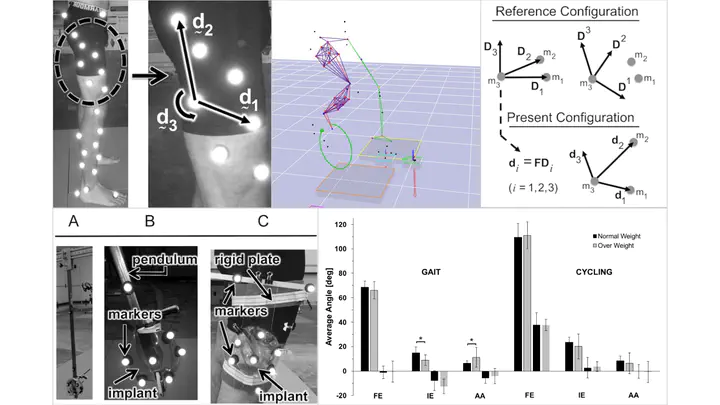Applied Cosserat Elasticity

My research within the HMB lab focused on applying Cosserat theory to reduce deformation-induced error, termed Soft Tissue Artefact (STA), in studies of lower body kinematics using fiducial markers to track participant motion. Our project was awarded funding by the Defense Health Program through the Department of Defense under Award No. W81XWH-16-1-0051, and focused on applying these methods to studying the knee joint kinematics of populations at risk for knee osteoarthritis within the Army (e.g. overweight/obese, amputees).
Summary
To compensate for STA, Solav et al. proposed implementing multi-marker clusters, analyzing each three-marker subset as a triangular Cosserat point element (TCPE), and applying a filtering algorithm [W1]. In our research, we extended the work of Solav and validated the method for three-dimensional rotations using a pendulum and human gait STA simulation experiments, and compared the TCPE method to established rigid body optimization (RBO) methods. After validating the TCPE method for use in human motion experiments, we modified the filering algorithm and utlized the TCPE method to compare STA corrected knee angles across several participant groups in gait and cycling. We are currently preparing a journal submission.